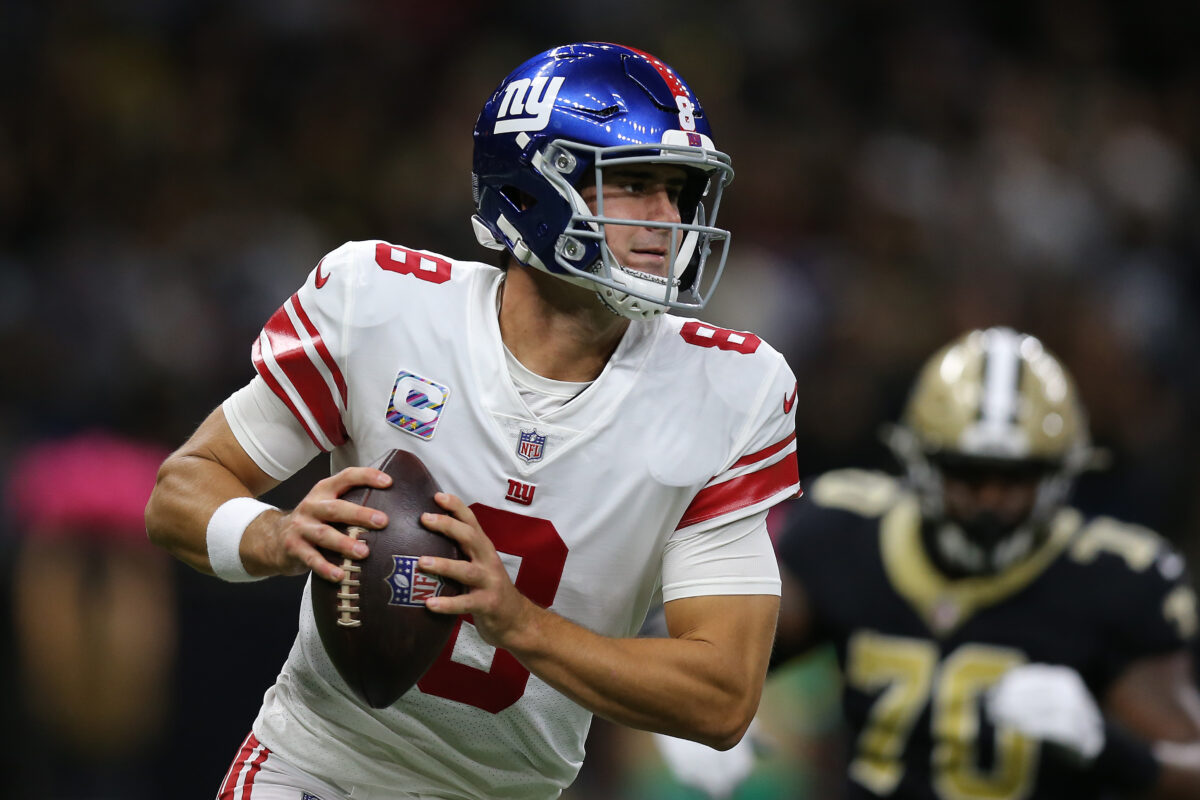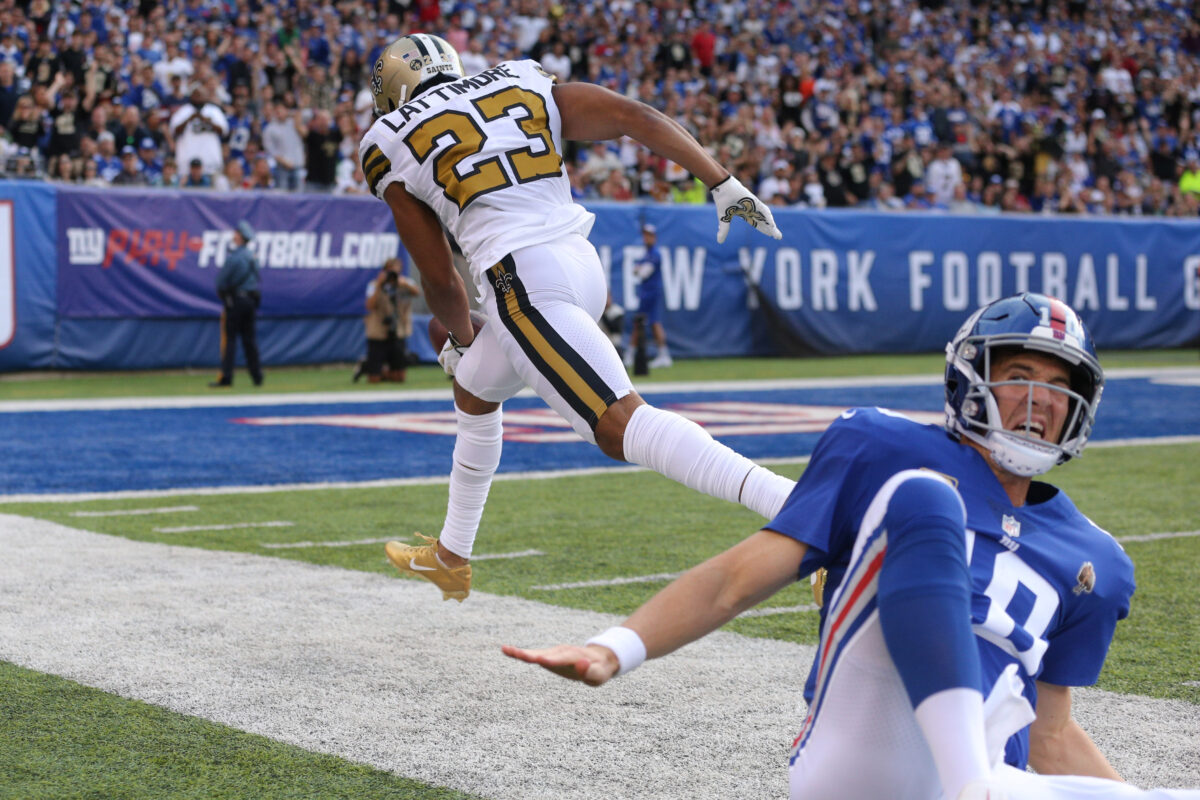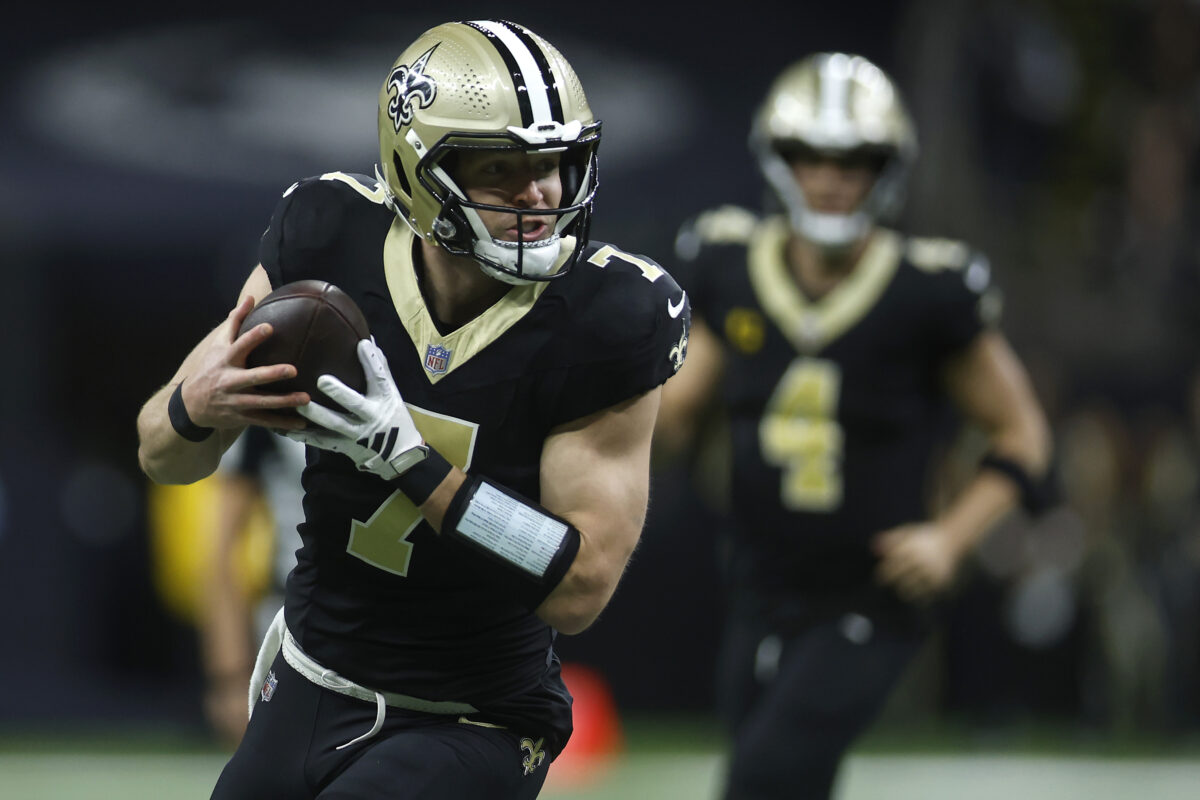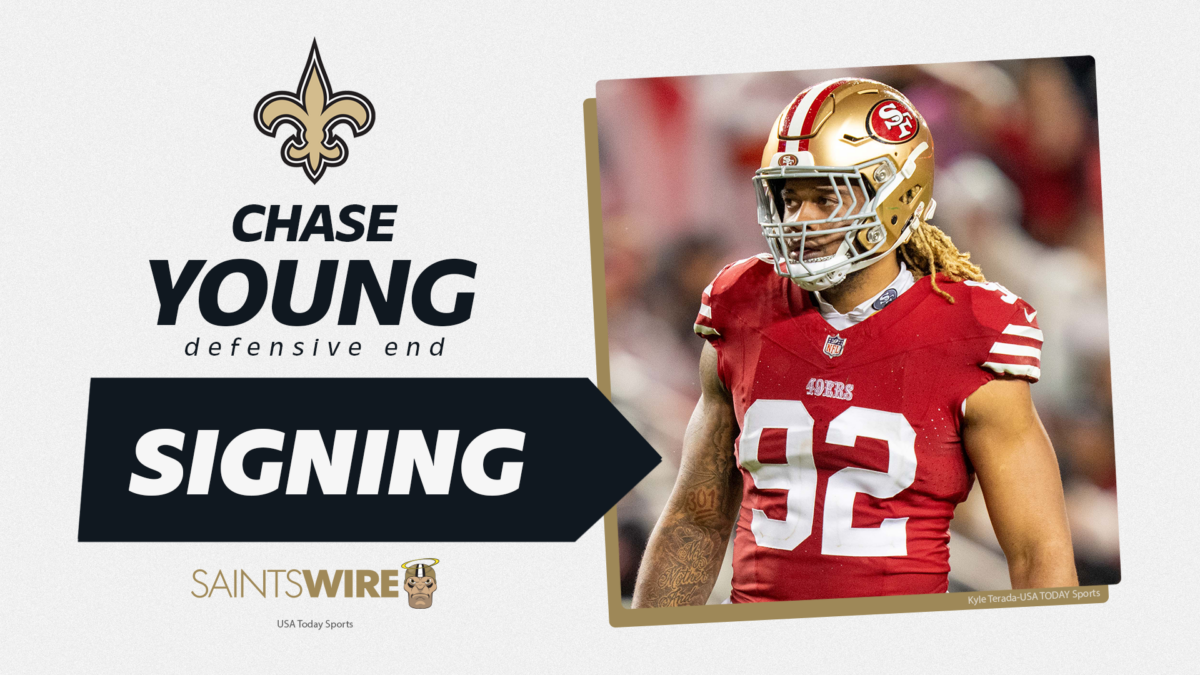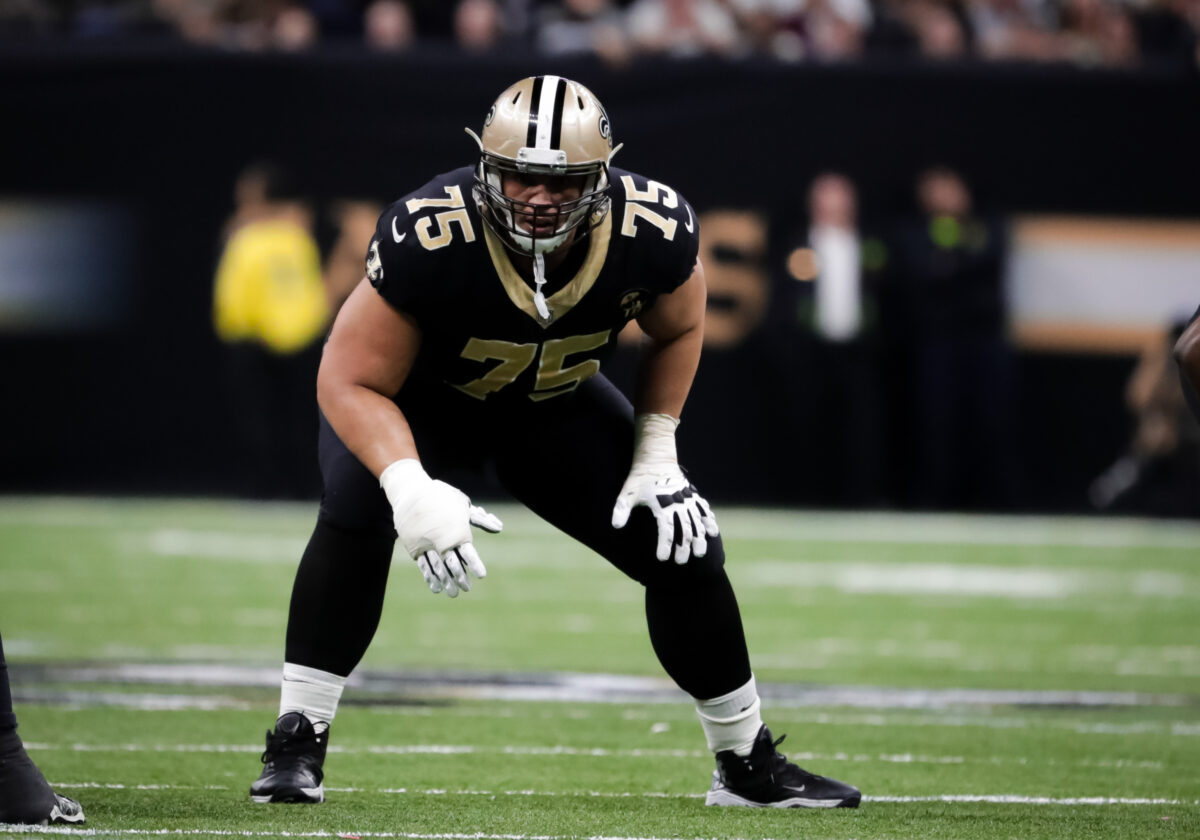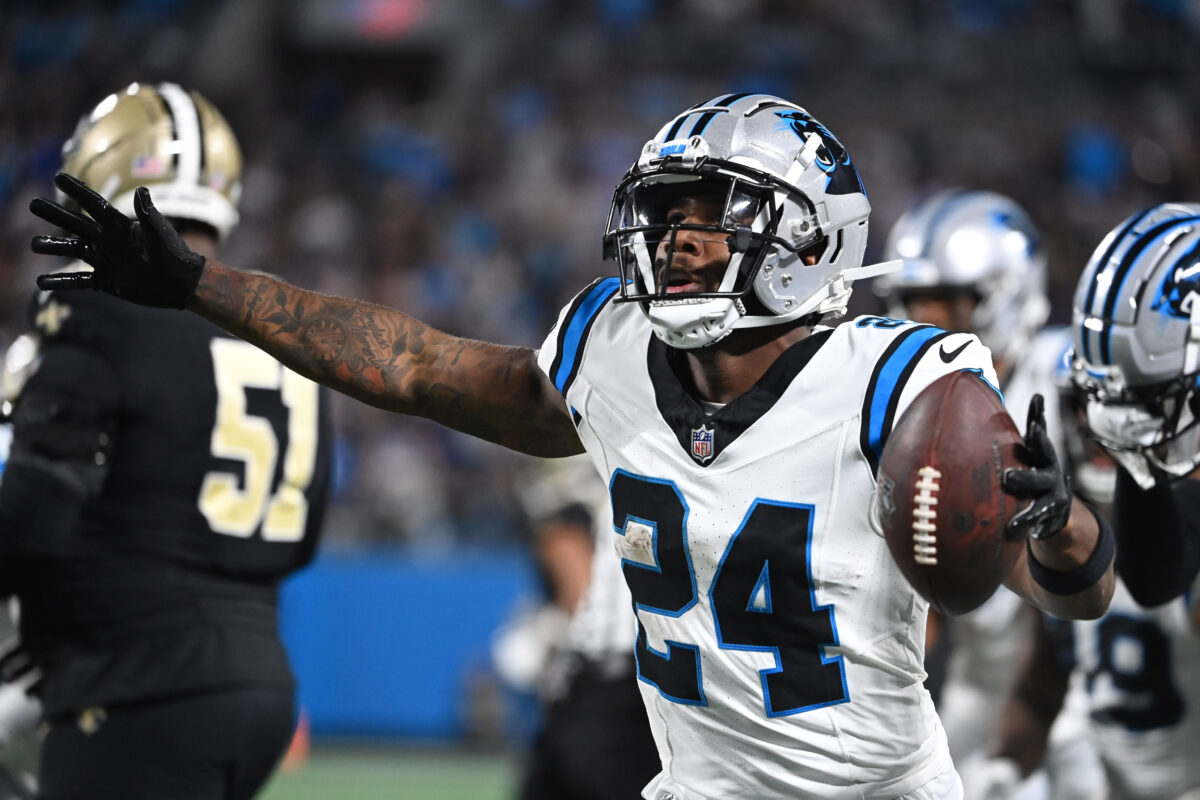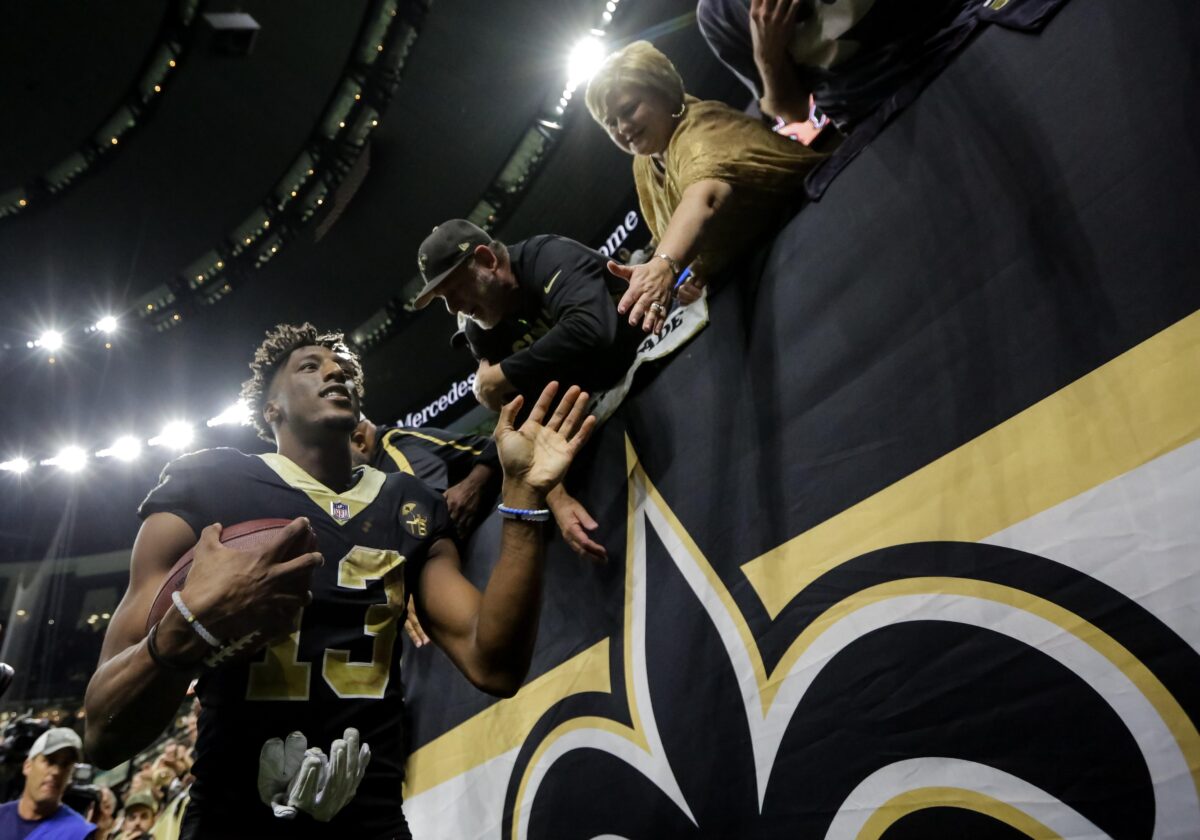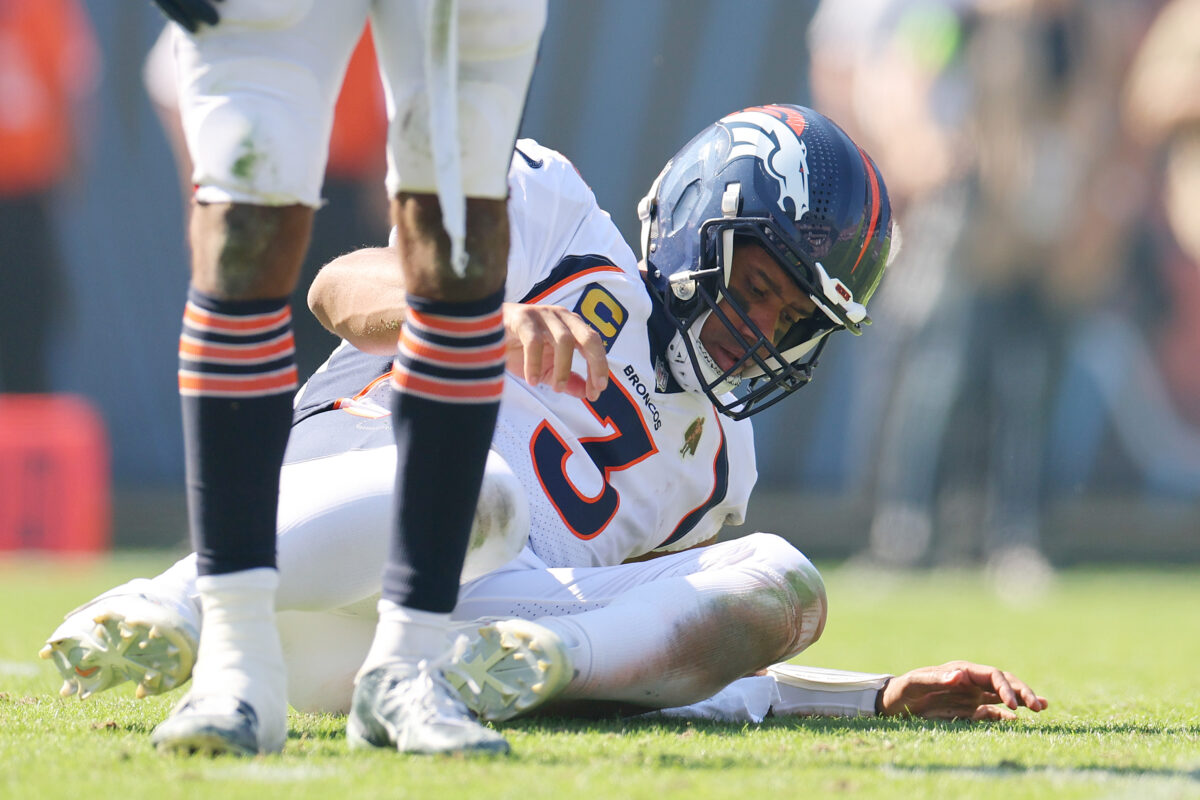It finally happened. The New York Giants have been talking around a split with one-time franchise quarterback Daniel Jones for the last few years, and on Friday they granted his request for a release after benching the former starter. Jones is expected to clear waivers and consider his options as a free agent in the weeks ahead.
The New Orleans Saints could learn from this. The Giants found out they had signed a lemon and took action to get out of their contract with an underperforming quarterback. They didn’t let the steep guarantees and dead money involved with moving on from Jones keep them from pulling the trigger. When the time is right, the Saints should do the same with Derek Carr — if things get to that point.
Right now Carr is playing some of the best football of his career. Since returning from an oblique injury he’s connected on 55 of his 83 passes (66.3%) to gain 753 yards, scoring five touchdowns without throwing an interception. And that’s with both of his top wide receivers unavailable for much of the last three games.
His 106.4 passer rating this season is the highest of his career. His 3.2% sack rate is second-best in his 11 years. More-comprehensive stats like adjusted net yards per attempt (ANY/A, which includes both negative and positive plays like interceptions, sacks, and touchdowns) have him rated highly, too. Klint Kubiak has him playing at a higher level than you may think.
So Carr’s job probably isn’t in jeopardy. That doesn’t mean it’ll never be. We saw how lifeless the offense looked for much of last season. He’s 11 years deep into his NFL career without a playoff win to his name. If he hasn’t already hit his peak, he’s got to be close.
We aren’t to the point where the Saints should be trying to move Carr just yet. But it could get here in a hurry, like it did for the Giants and Jones. New York is on the hook for more than $44 million in dead money for the rest of this year, with a $22.2 million dead money charge on the books in 2025. How does that compare to a hypothetical split between Carr and the Saints?
Signing bonus proration would cost the Saints an extra $10 million against the salary cap (which they can’t afford) to release Carr right this minute, so that’s not happening. But they do have a decision to make in the offseason. Releasing Carr before June 1 would barely break even, saving $1.3 million while being stuck with more than $50 million in dead money. That calculation made sense for the Giants. It probably won’t be something the Saints can stomach.
But waiting until after that June 1 deadline? That would result in $30 million worth of savings. The Saints would pay $21.4 million against the cap in dead money for 2025, then another $28.6 million on the 2026 salary cap, and then they’re clear by 2027. We could certainly see things take a turn through these last six weeks and the offseason that follows that makes this their best choice. The question is whether the Saints’ new head coach wants Carr, and how they can get under the salary cap, then sign new players, without touching Carr’s $51.4 million cap hit until well after the draft in April.
So right now the math says their best solution is (very likely) sticking with Carr. That doesn’t mean it’ll be best path forward in six months or this time next year. Spencer Rattler or Jake Haener could develop into a legitimate starter, a new head coach could have his eye on his own quarterback, or something else unforeseen pops up. That’s how the NFL goes, sometimes. And as we’ve seen with Jones and the Giants? Sometimes the writing is already on the wall.
[lawrence-auto-related count=5]
